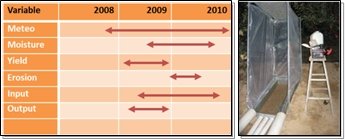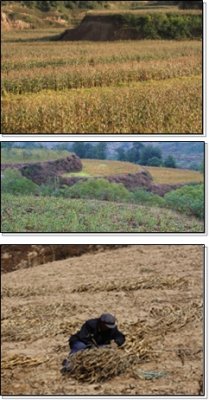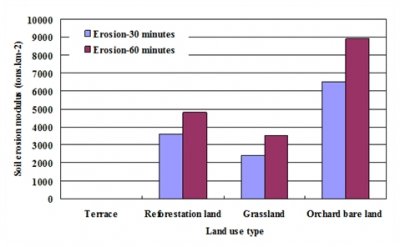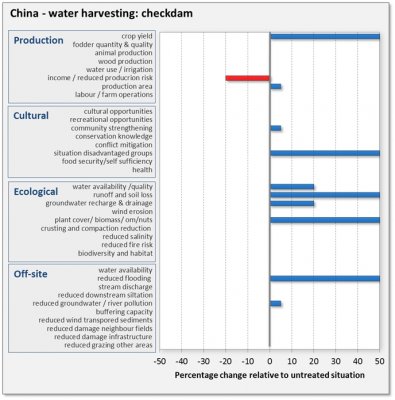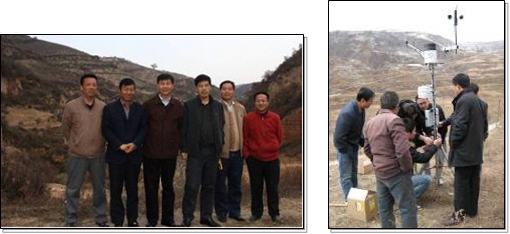| Checkdams and terraces: experimental results and conclusions |
 |
|
On the Loess plateau area in the Yan river basin in China, severe soil erosion is common. This results in deep gully and badland formation on the steeper slopes. To rehabilitate gullies, check dams have been constructed. These limit runoff and sediment delivery downstream and increase water availability for maize. The slopes can be stabilized with terrace constructions. Because of annual rainfall fluctuates between 400 and 1100 mm (average 560 mm), water can be a limiting factor in this region. Soil water conditions are monitored and compared to crops on the slopes, as well as runoff and erosion under different land uses. The erosion is especially important downstream while the conservation measures are tought to be important on site (because of soil moisture increase).
The results indicated an increase of soil moisture because the runoff from the up-stream area is detained by the check dams. This also results in minimizing soil losses from the fields. The result is based on 2010. The orchard with a bare soil shows twice as much soil erosion as the experiments under forest and on grass land. Terraces and check dams have of course no runoff because of the flat slope. 
The stakeholders here include local farmers, village head Soil and Water Conservation Bureau and Agriculture Bureau of Baota County. Farmers have clear planting plans with simple crops such as maize, millets, potatoes and beans. They have a desire to improve the income of the land and they think the soil and water conservation is a very good approach to improve the agricultural conditions (Photo 5). Since the yield of slope land, terrace and check-dam are higher, they would like the local government to invest more to build high quality land.
|
||||||||||||||||||||
Study sites

Acknowledgement
The DESIRE project was
|
DESIRE brought together the expertise of
26 international research institutes
and non-governmental organisations.
This website does not necessarily
represent the opinion of the
European Commission. The European
Commission is not responsible for
any use that might be made of the
information contained herein. 

